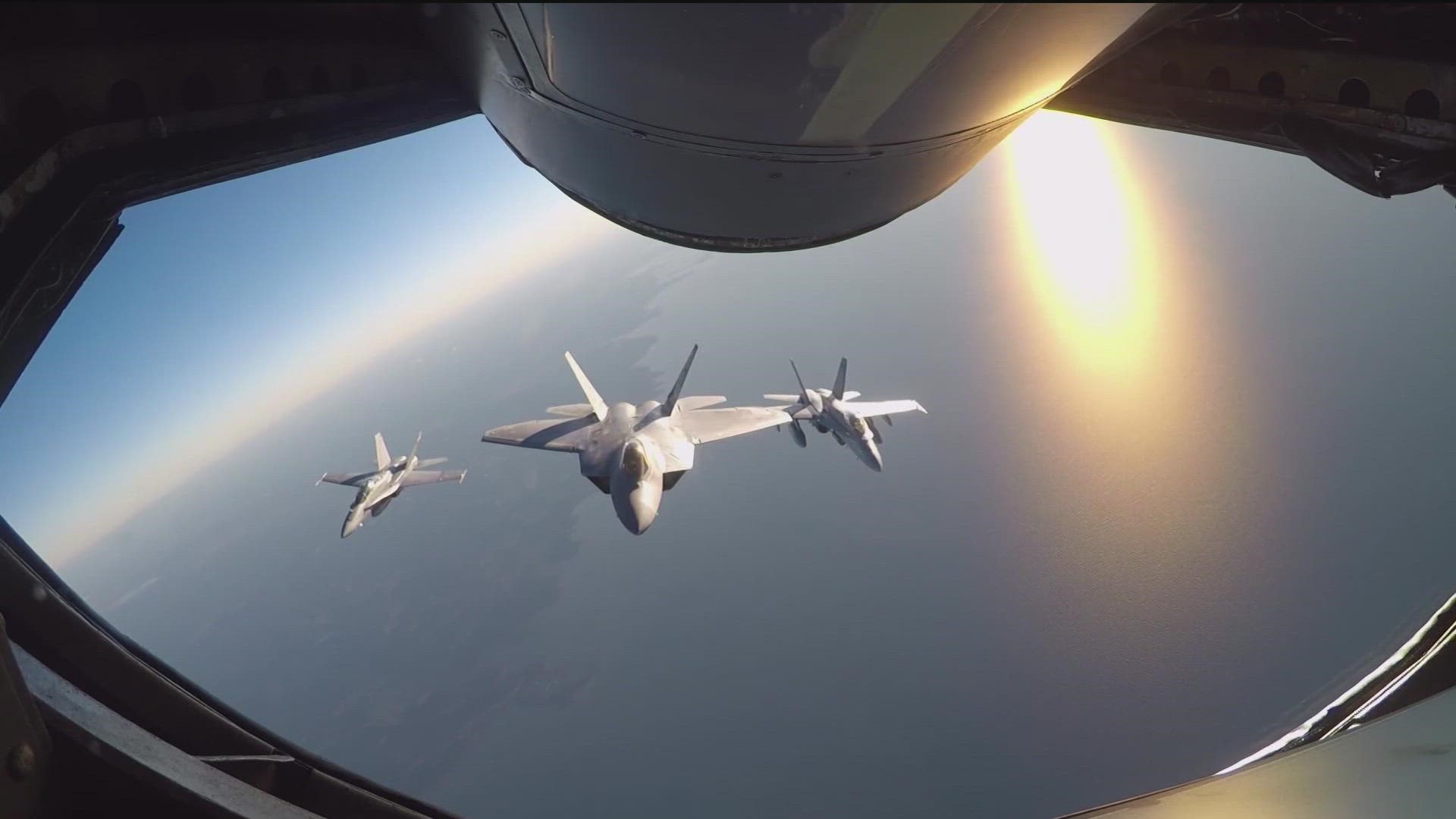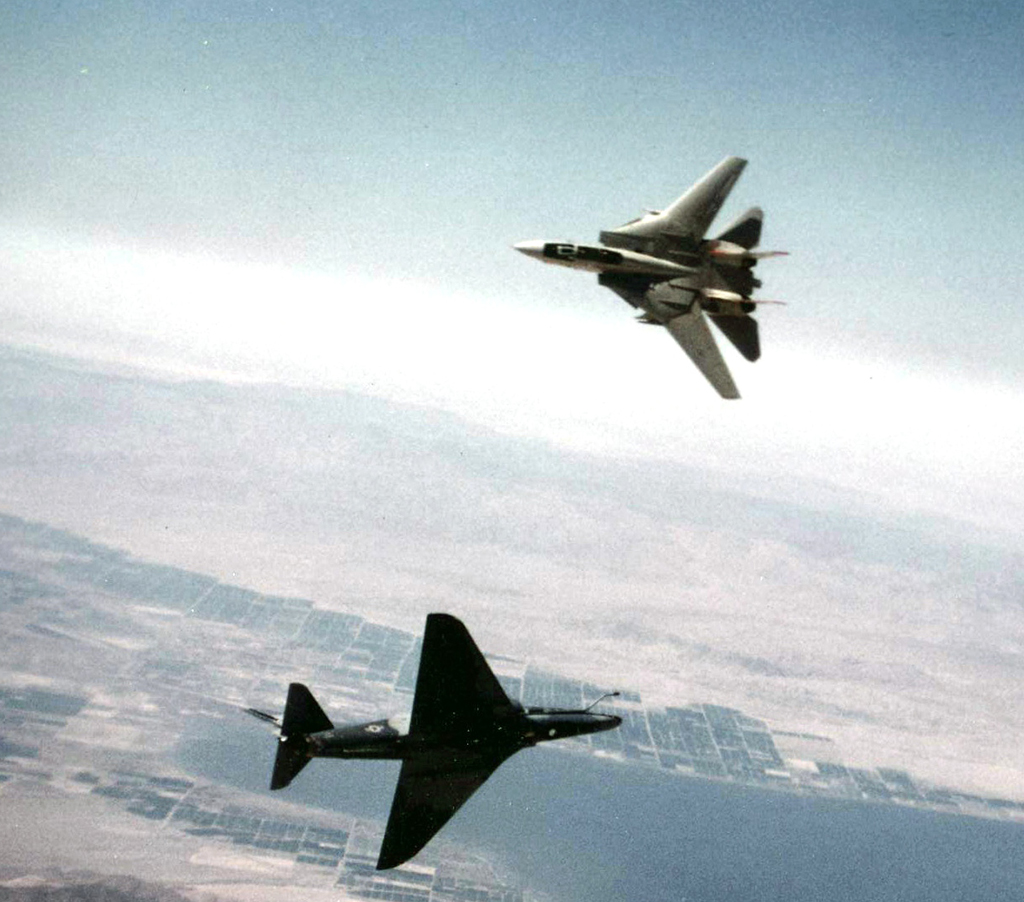Best Dogfighting Jet - The biggest problem, however, is that we don't know how effective the technology will be against a more advanced enemy. An F-35 stealth fighter engaged in a short duel with the Flanker-E will be in serious trouble - but what chance does the fast, highly maneuverable Russian fighter have to detect the F-35 and close in on it in the first place. ?
The Sukhoi Su-35 Flanker-E is Russia's most advanced fighter in service today, and represents the pinnacle of fourth-generation fighter design. It will remain so until Russia is able to put its fifth PAK-FA group into production.
Best Dogfighting Jet

Distinguished by its unparalleled maneuverability, most of the Su-35's electronics and weapons have been compared to its western equivalents, such as the F-15 Eagle. But even if it can be a deadly opponent of F-15s, Eurofighters and Rafales, the big question remains how it can compete with fifth generation fighters like F-22 and F-35.
Modern Air Jet Battle Combat
The Su-35 is an evolution of the Su-27 Flanker, a late Cold War design to match the F-15 in concept: a heavy multi-role fighter that combines superior speed with dog-fighting weapons.
The Su-27 stunned the audience at the Paris Air Show in 1989 when it demonstrated Pugachev's Cobra, a maneuver in which the fighter raises its nose up to 120 degrees - but continues to look the way the aircraft originally did.
Sent abroad, the Flanker was no longer associated with the Western forces, but saw air-to-air combat in Ethiopia during the border war with Eritrea, killing four people against MiG-29s without losing. They are also used for military missions.
The development history of the Su-35 is complicated. The upgraded flanker with wings (small extra wings on the front fuselage) called the Su-35 first appeared back in 1989, but it is not the same aircraft as it is today; only fifteen were made. Another upgraded Flanker, the two-seat Su-30, has been produced in large quantities, and its variants are exported to about a dozen countries.
Tom Cruise To Dogfight World's Most Advanced Russia Made Su 57 Fighter Jet In Top Gun: Maverick
The current version in question, without the canards, is properly called the Su-35S and is the most advanced version of the Flanker family. It began development in 2003 under the Komsomolsk-on-Amur Aircraft Production Association (KnAAPO), a subcontractor of Sukhoi. The first prototypes were released in 2007 and production began in 2009.
The Flanker family of aircraft are highly maneuverable - meaning they are designed to achieve maneuverability that is not possible through standard aerodynamics. In the Su-35, this is partially achieved through the use of propulsion engines: its Saturn AL-41F1S turbofans nozzles can point in different directions during flight to help the aircraft roll and vultures. The only other Western fighter in service, the F-22 Raptor, has the same technology.
This allows the Su-35 to achieve extremely high angles of attack - in other words, the aircraft can move in one direction while its nose points in the other. A long-range attack allows the aircraft to easily train its weapons in the area where it needs to escape and control it with force.

Such maneuvers can be useful for dodging missiles or close-range dogfights - although they leave each aircraft underpowered.
Battle Of 'best Dogfighters': Us Origin F 15 Fighters To 'challenge' Russian Origin Sukhoi Flankers In Japan Drills
The Flanker-E can reach a maximum speed of Mach 2.25 at altitude (as well as the F-22 and faster than the F-35 or F-16) and has excellent acceleration. Contrary to early reports, however, it does not appear to be capable of overflight — continuous flight without the use of afterburners — while carrying weapons. Its service ceiling is sixty thousand meters, according to F-15s and F-22s, and ten thousand meters more than Super Hornets, Rafales and F-35s.
The Su-35 has increased fuel efficiency, giving it a range of 2,200 miles on internal fuel, or 2,800 miles with two external fuel tanks. The lightweight titanium airframe and engines have a significantly longer lifespan than their predecessors, at six hours and 4,500 flights respectively. (For comparison, the F-22 and F-35 are rated at eight thousand hours).
The Flanker airframe is not stealthy. However, modifications to the engine bay and roof, as well as the use of radar-absorbing devices, may have reduced the Su-35's radar range; One story says that it can reach between one and three meters. This may reduce the number of possible detection and control, but the Su-35 is still not a "fighter."
The Su-35 has twelve to fourteen hardpoints, which gives it more power compared to the eight hardpoints on the F-15C and F-22, or the four hardpoints stored inside the F-35.
The Best Feeling After A Dogfight Is Pulling Back On The Throttle And Taking A Breath
At long range, the Su-35 can use the K-77M radar-guided missile (known as the NATO AA-12 Adder), which is said to have a range of more than 120 miles.
In short-range situations, the R-74 (NATO designation: AA-11 Archer) can be aimed "just to look" - just by looking at the eyes and the helmet, the pilot can aim up. Sixty degrees from where his plane is pointing. The R-74 has a range of over twenty-five kilometers, and uses thrust-vectoring technology.
The R-27 medium-range missile and the R-37 long-range missile (called the AA-13 Arrow, for use against AWACs, EW and tanker aircraft) complete the Su-35's air-to-air missile selection.

The Flanker-E can also carry up to seventeen thousand pounds of air-to-ground weapons. Historically, Russia has used relatively few ballistic missiles (PGMs) compared to Western militaries. However, the possibility of using such tools is great, if the leather tools and equipment are sufficient.
Top Gun: Maverick' F 18 Dogfighting Action Scenes Filmed By Melbourne Manufactured Jet
The most significant improvement of the Su-35 over its predecessor may be in the hardware. It is equipped with a powerful L175M Khibiny electronic missile designed to disrupt radar waves and destroy enemy weapons. This can seriously disrupt attempts to track and hit the Flanker-E.
The Su-35's IRBIS-E passive electronically scanned array (PESA) radar is expected to provide improved performance against stealthy aircraft. It is said to be possible to track thirty aerial targets with a Radar range of three meters up to 250 miles - with ranges as small as 0.1 meter over fifty kilometers. However, PESA radars are easier to detect and jam than the Active Electronically Scanned Array (AESA) radars currently used by Western fighters. IRBIS also has an air-to-ground mode that can target up to four ground units simultaneously for PGMs.
Supporting the radar is the OLS-35 targeting system that includes the Infra-Red Search and Track (IRST) system, which is said to have a range of fifty kilometers - which can be very dangerous for fighters.
Currently, the Russian Air Force operates forty-eight Su-35s. Another fifty were ordered in January 2016, and are produced at a rate of ten per year. Four Su-35s were sent to Syria this January after a Russian Su-24 was shot down by a Turkish F-16. Armed with anti-aircraft missiles, the Su-35s are designed to send a message that the Russians are a threat if they attack.
Fighter Pilots Reveal Why You Don't Want To Mess With The A 10 Warthog In A Dogfight
China has ordered twenty-four Su-35s at a cost of $2 billion, but says it will not buy more. Beijing's interest is believed to lie in adopting the Su-35's thrust vectoring engines for use in its production. The Chinese PLAAF already operates the Shenyang J-11, a version of the Su-27.
Attempts to sell the Su-35 abroad, mainly to India and Brazil, have been unsuccessful. Recently, Indonesia has indicated that it wants to buy eight this year, although the signing of the agreement has always been delayed. Algeria is said to be considering acquiring ten for $900 million. Egypt, Venezuela and Vietnam are also potential customers.
Estimates of the cost of the Su-35 have been between $40 million and $65 million; however, export contracts have been at prices above $80 million per unit.

The Su-35 is at least equal - if not superior - to the best Western fighters of the fourth generation. The big question is how well would it fare against fifth generation aircraft like the F-22 or F-35?
The Rise Of A.i. Fighter Pilots
The Su-35's maneuverability makes it an unparalleled fighter. However, future air-to-air strikes with modern missiles (R-77s, Meteors, AIM-120s) can be carried out at large ranges, while even short-range strikes can be equipped with all types of weapons such as the AIM-9X. and R-74 which are not required to guide the aircraft to the target. However, the Su-35's speed (which increases the missile's speed) and large payload capacity mean it can fight more than a surface attack. Meanwhile, the Flanker-E's power and electronic maneuvers can help it evade anti-missile missiles. Tactics, training and luck determine who will survive in a space battle. Despite today's emphasis on border warfare, most of the fighting has been done at close range. The ten followers are the best fighters in this field. The system is random, and different planes have access to the plane and the speed of the plane. By its nature, the ten points are all very simple and should be the basis of the discussion and not the conclusion.
To keep this blog going - so we can create new posts - we need donations. We're trying to do something different with Hush-Kit: give aviation fans something fun, amazing and informative. Please help us by clicking the donate button above
Best jet ski covers, best private jet service, best jet card, best jet charter, jet best ink, best private jet charter, best jet ski insurance, best fractional jet ownership, best dogfighting games, best dogfighting games ps4, best jet septic, best jet card programs
0 Comments